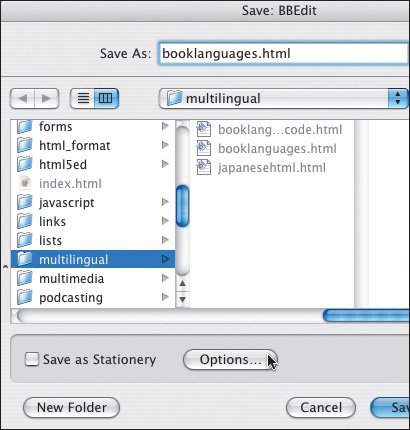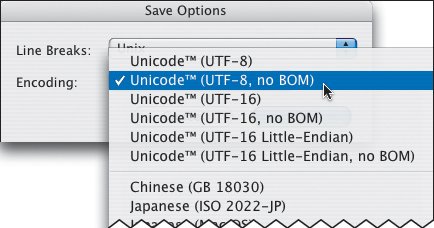Saving Your Page with the Proper Encoding
| At the beginning of this book, I said you had to save your Web pages as "text-only" documents, and made little mention of the encoding (see page 46). That's because most of my readers create Web pages and style sheets in the same language as their operating system and because most text editors automatically save files with the default system encoding. You only need to manually choose the encoding as you save if your document contains characters that don't belong to your system's default character encoding. To save your page with the proper encoding:
Figure 21.10. In BBEdit, a popular (X)HTML editor for Mac, click the Options button when you go to save your file. Figure 21.11. Choose the desired encoding from the Encoding pop-up menu. I recommend choosing UTF-8, no BOM (Byte-Order Mark). You should only use an option with BOM if you're using UTF-16 (which needs it). Otherwise, it causes problems with some browsers.
|
EAN: 2147483647
Pages: 340


 Tips
Tips